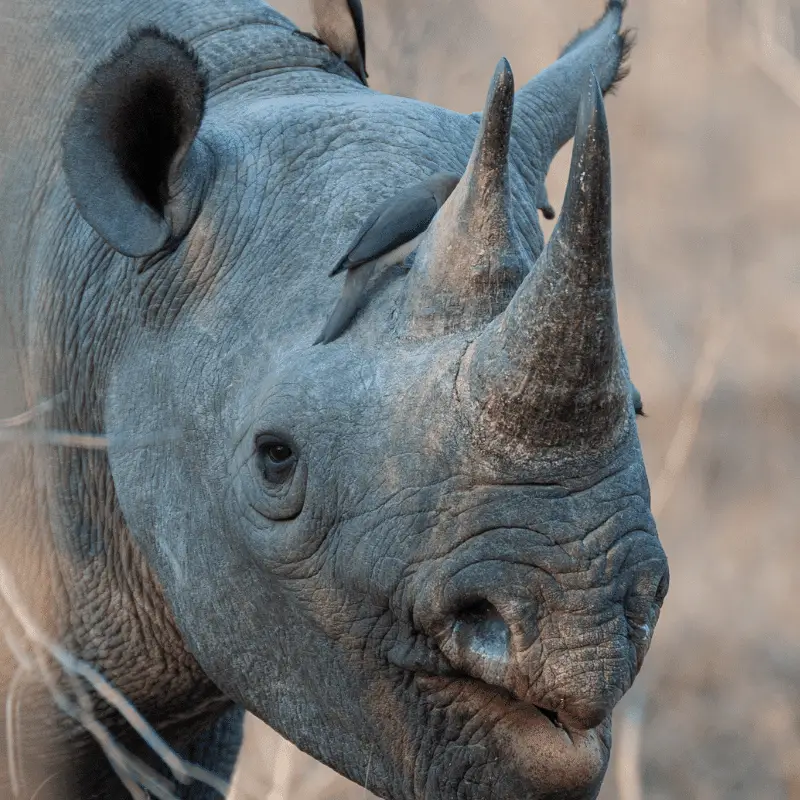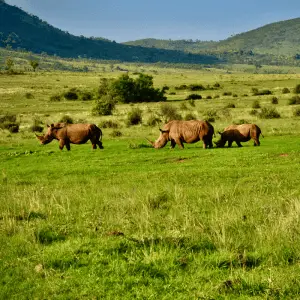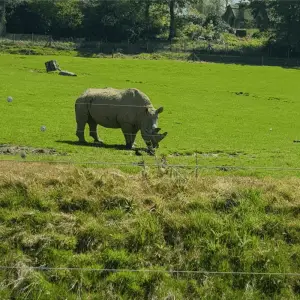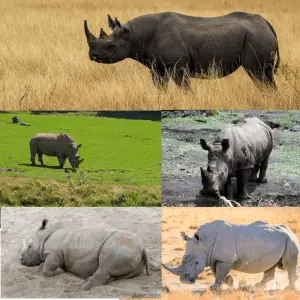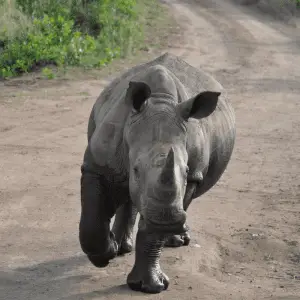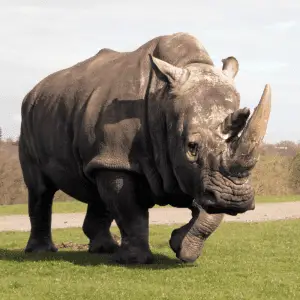Most people believe that rhinos do not use their horns for any purpose. However, there are many ways a rhino will use its horns in various situations. Below are some that I have observed them doing, and if you watch the rhinos closely when you visit a zoo or watch any documentaries, you will quickly see that rhino horns have a purpose.
Horn Amounts Of The Different Rhino Species
| Rhino Species | Amount |
|---|---|
| Black Rhino (Female) | Two Horns |
| Black Rhino (Male) | Two Horns |
| Jarvan Rhino (Female) | One Horn |
| Jarvan Rhino (Male) | One Horn |
| Sumatran Rhino (Female) | Two Horns |
| Sumatran Rhino (Male) | Two Horns |
| The Greater One-Horned Rhino (Female) | One Horn |
| The Greater One-Horned Rhino (Male) | One Horn |
| White Rhino (Female) | Two Horns |
| White Rhino (Male) | Two Horns |
1. Intimidation
Rhinos are one of the most territorial mammals on earth. Once a male rhino defines its territory and reigns on it, he does not allow dominant males to enter his area, much like the hippos, which are also very territorial. Rhinos use their horns for posturing. Hippos will open their mouths very wide and show off their teeth to intimidate other animals.
Most of the time, the rhinos intimidate other male rhinos by posturing menacingly towards them. In this way, most of the time, rhinos avoid a fight.
While posturing, the rhinos lower their heads and charge straight towards the animals encroaching on their area. This showcasing of strength and the horn often works like a charm for the overly territorial male rhinos.
2. Attraction
Rhinos often use their horns to attract their mates. Among rhinos, the horn is a primary indicator of a strong mate. The larger a rhino’s horn is, the more attractive it becomes in the females’ eyes and the easier it is for the male to find a mate.
3. Defence
Both the African rhino species use their horns to defend themselves or their territory. If the rhinos cannot stall the fight by posturing and threatening menacingly, they will use their horn to fight.
Even though rhino horns are made of keratin, the horns are strong and sharp enough to penetrate the thick hide of the rhinos.
Even though the body weight of the rhinoceros is pretty heavy, these animals are surprisingly fast on their feet. So the quick charge towards enemies can create significant damage.
Almost one-third of the female black rhinoceros and half of the male black rhinoceroses die from fighting.
4. Digging
Rhinos also use their sharp horns to dig holes in the dry compact land. If there is not enough grass available in the area, the rhinos use their horns to search the ground to find edible roots or other small plants. Even if there is no edible root, the Rhinos often dig through the dirt to access smaller, shorter grasses. Rhinos also dig dry river beds when they are desperate for a drink.
5. Mother Duties
Female rhinos often use their horns to steer their babies around. Mothers keep showing this kind of behaviour until their baby rhinos are capable enough to navigate around independently.
6. Border Control
The male Rhinos use their horns to gather excrement into a pile on the border of their territory. This way, they often mark their territory.
Do all rhinos have horns?
Yes, all adult species of rhinos will have either one horn or two horns. All baby rhinos are born without horns but grow as they age. Sadly, rhinos that have been poached for their horns will have none until they slowly grow back.
Do rhino horns grow back after being cut off?
Yes, rhino horns grow back; however, this process is prolonged and depends on where the cut was made. Rhino horns are made of the same substance as nails and hair, which continue to grow.
What are rhino horns made of?
The rhino horns are made of keratin, the same protein that helps create nails and hair.
Why do rhinos rub their horns on surfaces?
Rhinos keep their horns sharp by rubbing them on rough surfaces. This rubbing behaviour helps the rhinos remove the softer outer part of the horn, making the horns sharper.
Why do some rhinos have two horns?
The horns of the rhino are nothing but their simple physical features. Even though the rhinos use their horns to dig holes or fight each other, their number of horns only depends on the species. For example, black rhinos, white rhinos, and Sumatran rhinos have two horns, while the Java rhinos only have one.
Two Horned Rhinos
Among the rhinos with two horns, the front one grows quicker than the second one. It is also the larger of the two horns.
The two-horned rhinoceros are considered endangered because of their habitat loss, slow rate of reproduction, and poaching. Two-horned rhinoceros are one of the rarest animals in the world.
Poachers kill the rhinos for their horns. Many believe that rhino horns can ensure great physical benefits and magical healing capabilities. Sadly the rhinos pay the price for this make-believe and never proven act. This belief has created an illegal market that shamefully instigates poaching.
You can see two horns in both Sumatran and African rhinos. However, the Indian and the Java rhinos come with only one horn. According to the IUCN red list, the Sumatran and Javanese rhinoceros are critically endangered species.
Sumatran rhino, also known as the Asian two-horned rhinoceros, is one of the five rhinoceros roaming the earth. It is the smallest of all the rhinoceros species. However, the Sumatran rhino is still quite large compared to the other mammals.
The Sumatran and the African two-horned rhinos have two separate horn-like structures with one more prominent nasal horn and a stub. The more prominent nasal horn is generally 15 to 25 cm long, while the stub grows about 5 to 10 cm.
Where did the ancient two-horned rhinos live?
The two-horned rhino species once used to roam the jungles of Bhutan, India, Bangladesh, Laos, Myanmar, Malaysia, Thailand, Indonesia, and the water bodies, rainforests, and cloud forests of China. Mammal historians believe that two-horned rhinoceroses once lived in the Southwestern region of China, especially in Sichuan Province.

